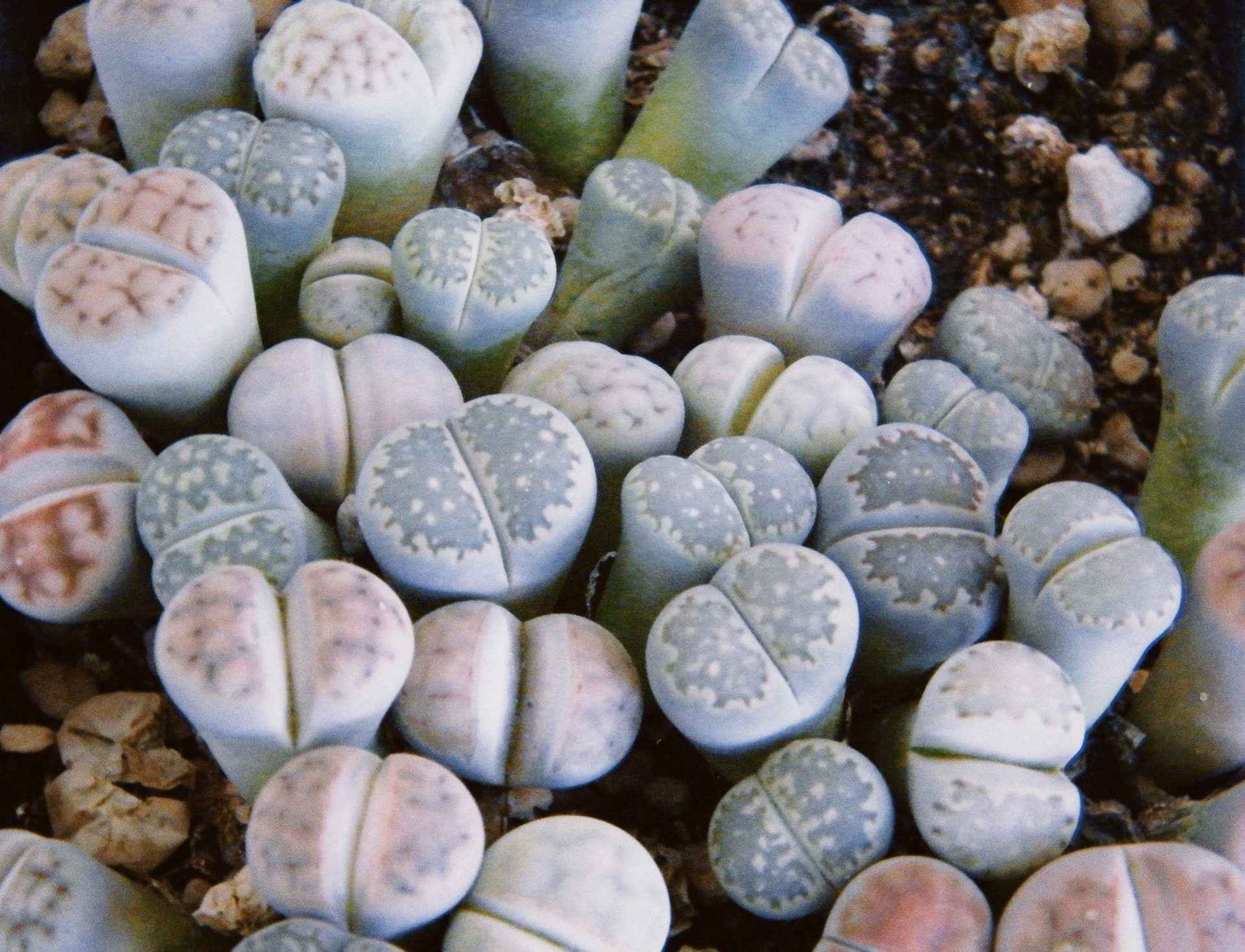Using Living Stones (Lithops) in the Lab
ResourceThese marvellous plants epitomise the role of camouflage and mimicry in a harsh environment, ‘disguising’ themselves as stones amid the rocky landscapes of Southern Africa. Despite looking stone-like, the stocky leaves of Lithops are actually translucent, to allow light to penetrate to the chloroplasts deep inside.
One of the SAPS ‘Star Plants’ for your lab, showing an extreme form of adaptation to get your students thinking. Follow our care tips below to ensure that the plants flourish in your lab.
Practicals
- Adaptation – an excellent plant for teaching about adaptation to dry habitats. The leaves have modified over time to enable survival in dry, stony landscapes of Southern Africa, with a reduced surface area and spongy internal water storage It makes a good comparison with Cape Sundew, which is highly adapted to a moist, nitrogen-poor environment.
- Mimicry – Leaf surface patterning mimics surrounding stones so that plants avoid predation for their succulent plant tissues
- Adaptation – The spongy storage tissues can be dissected and examined under a microscope
- Adaptation – You can shine a torch through the apparently solid leaves to demonstrate that they are in fact translucent, to allow light to reach the chloroplasts.
- Adaptation – A good example of a xerophyte to use in A level investigations
Further Resources
- BBC Private Life of Plants DVD, Episode 6, ‘Surviving’
Teaching Topics
- Adaptation
- Mimicry
- Xerophyte
Description
Living Stones, Lithops, Mesembryanthemum and Conophytum
A very small succulent with shortened [truncate] leaves adapted for water storage and camouflaged as stones.
Lives in the dry landscapes of Southern Africa. Each leaf has a semi-transparent ‘window’ to allow light to penetrate chloroplasts deep inside the plant as part of the photosynthetic process.
Growing and sourcing
Adapted to: A very dry, stony habitat.
Obtaining: Some good garden centres and nurseries, or from specialist suppliers online.
Propagating: Lithops can be grown from seed.
Compost: Use a very free-draining, gravel based compost. You can create this yourself by mixing John Innes No. 2 compost with horticultural sand or grit in a 2:1 ratio. They are best grown in a terracotta pot, which is more porous than a plastic pot.
Light: Full sun. Keep these on a sunny window sill.
Water: During spring and summer, water twice a month, allowing the water to drain through the compost and then emptying the saucer. In winter, water approximately once a month to prevent the roots totally drying out. Never allow the pot to sit in water.
Temperature: 25-35 degrees c in the summer, and not less than 10 degrees c in the winter.
Feeding: Feed with a houseplant fertiliser such as ‘Baby Bio’ at half recommended strength once a month when watering in spring and summer. Do not feed in autumn and winter.
Eventual size: very small, approx 5cm high.
